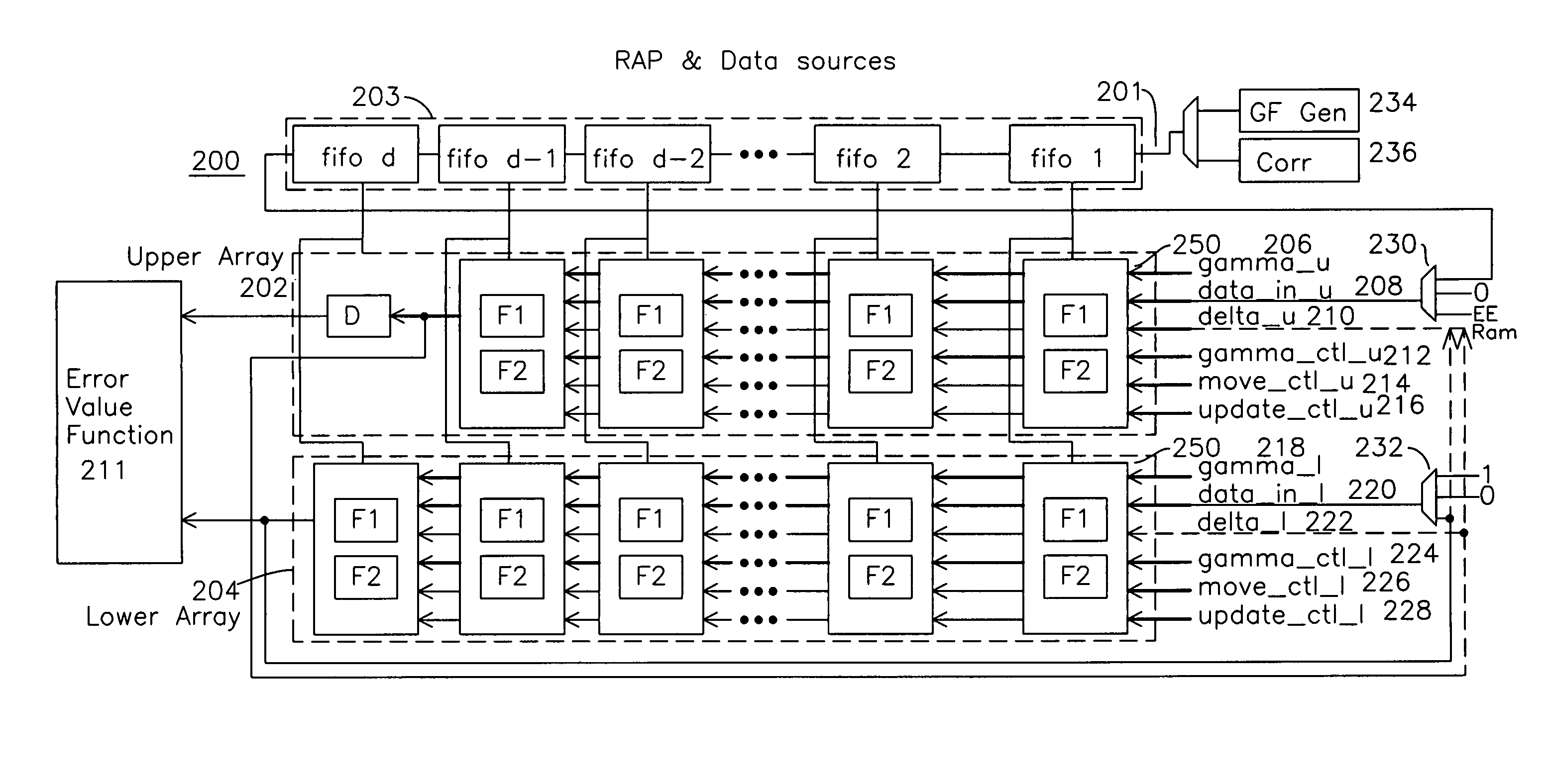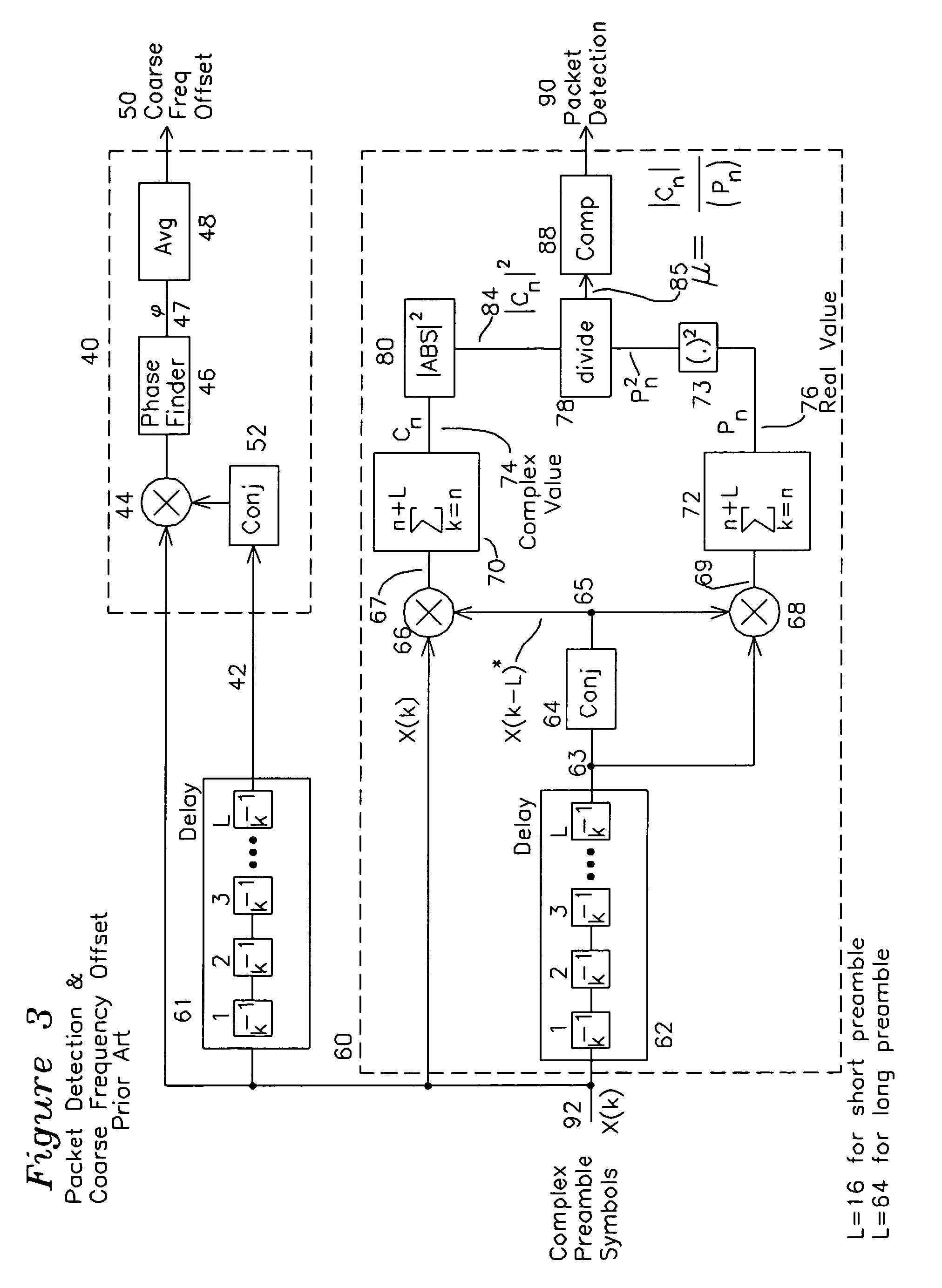Reed-solomon decoder using a configurable arithmetic processor
a configurable arithmetic processor and decoder technology, applied in the field of decoders for error correction code information, can solve the problems of critical path delay in vlsi implementations of bm algorithm, limit the speed of operation, implementation does not handle decoding with erasure,
- Summary
- Abstract
- Description
- Claims
- Application Information
AI Technical Summary
Benefits of technology
Problems solved by technology
Method used
Image
Examples
Embodiment Construction
[0096]FIG. 4 shows the block diagram for the decoder 100 of the present invention. Incoming data 102 is qualified by input_valid 104 and erasure_flag 106, which indicate receipt of valid data and erasure of input data, respectively. Input data 102 is applied to the Syndrome Computer 108, which constitutes the first pipeline stage whose implementation remains the same irrespective of data input configuration and the shortening and / or puncturing length. The syndrome computer (SC) 108 uses erasure_flag 106 and passes this information to erasure marker 110, which stacks the inverse exponent of erasure location(s) as the Syndrome Computer 108 declares them. Processing occurs in discrete time intervals separated by a pipeline boundary 122, which separates the processing into a first pipeline 124 comprising the Syndrome Computer 108 and Erasure Marker 110, and a second pipeline 126 comprising the Reconfigurable Arithmetic Processor (RAP) 112. The page select 116 and associated memories 118...
PUM
 Login to View More
Login to View More Abstract
Description
Claims
Application Information
 Login to View More
Login to View More - R&D
- Intellectual Property
- Life Sciences
- Materials
- Tech Scout
- Unparalleled Data Quality
- Higher Quality Content
- 60% Fewer Hallucinations
Browse by: Latest US Patents, China's latest patents, Technical Efficacy Thesaurus, Application Domain, Technology Topic, Popular Technical Reports.
© 2025 PatSnap. All rights reserved.Legal|Privacy policy|Modern Slavery Act Transparency Statement|Sitemap|About US| Contact US: help@patsnap.com



